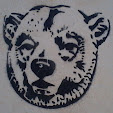You may not recognise the Raytel name, but I bet that if you're
between 40 and 50-years of age, you had at least one of their products in your
toy stash. Good, solid - now called - 'traditional' toys, although they have
always been made and still are, there are several makers exhibiting stuff like
this at the London Toy Fair every year, and we saw similar forts and vessels
from Papo not that long ago.
I would add, that you can see in the image
a loss of quality over the Tri-ang/Pedigree
stuff those of us in the 50-60+ years bracket had, and upon which these seem
based, thinner tubes on the chair and table, thinner wooden legs, plain blocks,
plastic wheels etc . . . none of it is quite as substantial as the previous
generation's playthings.
Close-up of the previous shot shows us the
stuff we're interested in now, as 'grown-up' toy soldier fans, two wooden forts
from their 1977 catalogue; a traditional castellated affair with buttressed
corners and an unusual, hexagonal log-fort, from the frontiers of toy-land.
Main Street, Fort Town, Woodsville! There's a third and
some blurb! Is that the proper spelling of Medieval? Fort
[John?] Wayne looks a bit like our
childhood fort but ours was hand-made by our parents and had thick walls and
deeper barracks along the back wall!
I like how the presence of a moat round the
Mediaeval Castle is hinted at by a low
wall; if the drawbridge is up, that's it - you'll have to wait 'till the post
comes or the milk's delivered!
Having pointed out that the overall quality
of Raytel's products was less
substantial than those that went before, I would say these seem to be made of
real wood and/or ply sheet, unlike some of their contemporary rivals who used
pressed-hardboard, a forerunner of MDF and the stuff peg-boards (for rack-toys)
were made of, which had a tendency to warp in damp, or collapse completely, if
left out in the rain!







No comments:
Post a Comment